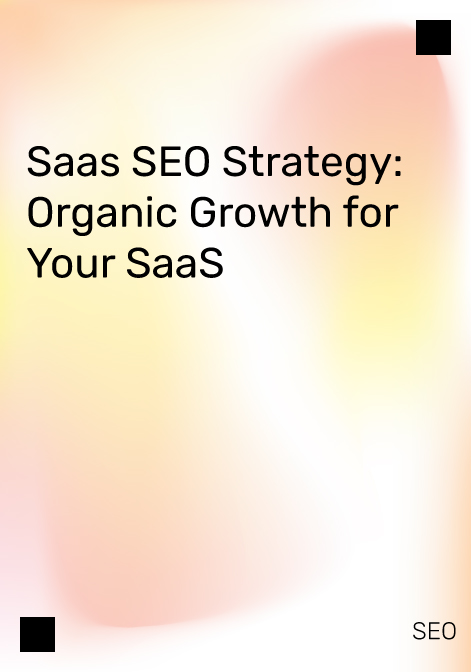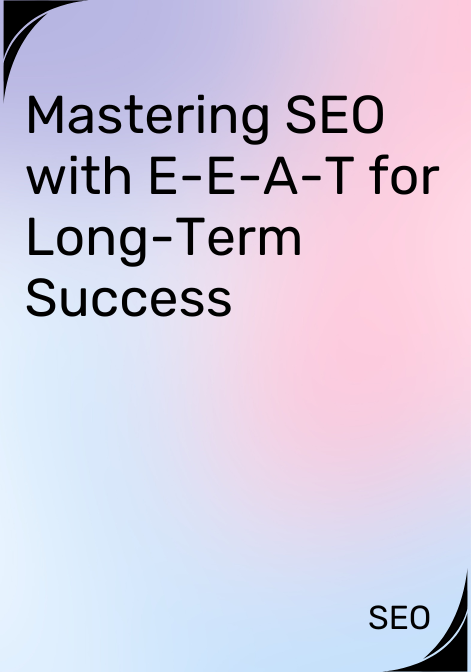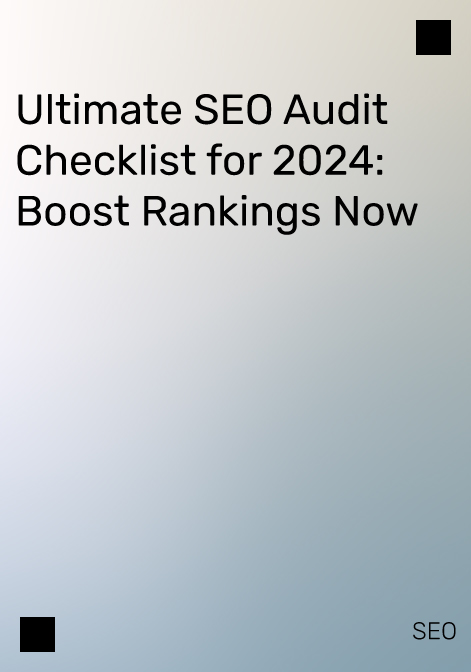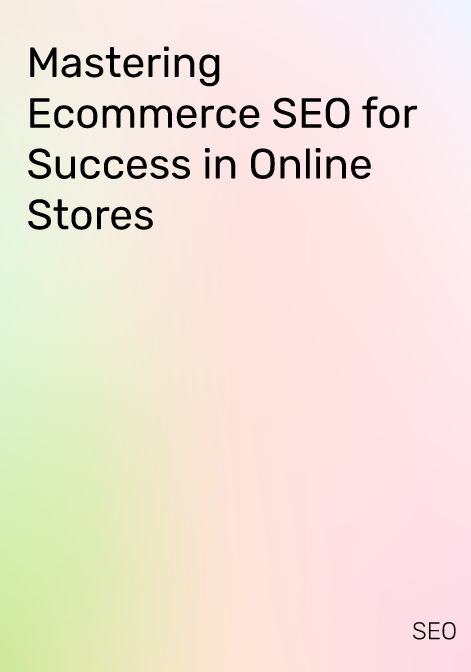I. The Importance of SEO for SaaS Businesses:
Imagine your SaaS product sitting unnoticed in a crowded digital marketplace. Potential customers are searching for solutions to their problems, but your website doesn’t show up on their radars. That’s the harsh reality for many SaaS businesses without a solid Saas SEO strategy.
Why SEO is vital for your SaaS success:
- Organic Traffic is Gold: SEO drives free, targeted traffic to your website. Unlike paid advertising, organic visitors are actively searching for solutions you offer, leading to higher conversion rates and reduced customer acquisition costs.
- Brand Visibility and Trust: Ranking high in search results builds credibility and authority, making your SaaS stand out from the competition. When potential customers see your brand consistently appearing for relevant keywords, they’re more likely to trust your expertise.
- Scalable Growth: Unlike paid advertising, which decreases as the budget increases, SEO’s impact compounds over time. The better your SEO, the more organic traffic you attract, leading to even higher rankings and further organic growth.
Challenges and Opportunities of SaaS SEO:
Challenges
- Highly Competitive Landscape: The SaaS market is crowded, making it tough to rank for valuable keywords.
- Constant Algorithm Updates: Search engine algorithms evolve constantly, requiring consistent adaptation and optimization.
- Intangible Product: Unlike physical products, the value of SaaS solutions can be abstract, making it challenging to create compelling search-worthy content.
Opportunities:
- Niche Focus: By targeting specific customer segments and their unique needs, SaaS businesses can carve out valuable SEO niches with less competition.
- Content-Driven Success: High-quality content that educates and engages your target audience is a powerful SEO weapon, building trust and brand loyalty.
- Data-Driven Optimization: With the right tools and analytics, you can track and measure your SEO efforts, constantly refining your strategy for maximum impact.
Setting Realistic SEO Goals for Your SaaS:
Don’t fall into the trap of aiming for overnight SEO success.
Set SMART goals for your SaaS SEO based on your business objectives and resources:
- Specific: Clearly define your desired outcomes, such as increasing organic traffic by 20% in 6 months.
- Measurable: Choose trackable metrics like keyword rankings, organic conversions, and qualified leads generated.
- Attainable: Set ambitious yet achievable goals, considering your competition and market saturation.
- Relevant: Align your SEO goals with your overall business goals, like increasing customer acquisition or brand awareness.
- Time-bound: Set deadlines for achieving your goals to ensure consistent progress and focus.
Additional Reads: Definitive Guide to AMP
II. Keyword Research and Targeting:
Keyword research is the cornerstone of any effective SEO strategy, and for SaaS businesses, it’s an absolute treasure hunt.
By uncovering the hidden gems of search intent and user behavior, you can attract highly qualified leads who are ready to convert.
Let’s delve into the fascinating world of SaaS keyword research:
Identifying Buyer Personas and Search Intent:
Before you start digging for keywords, understand who you’re digging for! Craft detailed buyer personas – fictional representations of your ideal customers – outlining their demographics, pain points, goals, and search behavior.
Think beyond just keywords: what questions do your buyers have? What problems are they trying to solve? Tools like Google Search Console, Quora, and competitor analysis can reveal valuable insights into your target audience’s search intent.
Conducting Thorough Keyword Research (Tools and Strategies):
Now, it’s time to grab your keyword research shovel! Utilize a variety of tools and strategies to unearth the gold:
- Keyword research tools: Semrush, Ahrefs, Google Keyword Planner, and even free options like Ubersuggest offer keyword volume, competition, and related keyword suggestions.
- Competitor analysis: See what keywords your competitors are ranking for and identify potential gaps in their strategy.
- Customer feedback and reviews: Mine your existing customer interactions for golden nuggets of search intent and pain points.
- Long-tail keyword exploration: Explore longer, more specific keyword phrases that have lower competition but high conversion potential.
Prioritizing High-Value Keywords (Search Volume, Competition, Relevance):
Not all keywords are created equal.
You need to identify the diamonds from the pebbles:
- Search volume: Choose keywords with sufficient search volume to attract traffic, but avoid overly competitive terms with near-impossible ranking chances.
- Competition: Check the keyword difficulty to assess how challenging it will be to rank for that term. Consider targeting long-tail keywords with lower competition but higher relevance.
- Relevance: Above all, choose keywords that perfectly align with your buyer personas’ search intent and your SaaS offering. It’s better to rank for a few highly relevant keywords than many irrelevant ones.
Integrating Transactional and Informational Keywords:
Think of your keyword mix as a balanced meal.
You need both transactional keywords with clear purchase intent (“buy project management software”) and informational keywords that attract potential customers in the early stages of their buying journey (“best tools for remote teams”).
By creating content that targets both types of keywords, you can capture users at different stages of the decision-making process and nurture them towards conversion.
Leveraging Long-Tail Keywords for Targeted Traffic:
Long-tail keywords are the hidden gems of the SEO world. These highly specific phrases, like “best cloud-based accounting software for freelancers,” have lower competition but offer high conversion potential because they attract users with a laser-focused intent.
Focus on incorporating long-tail keywords into your content strategy to target niche audiences and drive qualified leads with a higher chance of conversion.
III. On-page Optimization:
Think of your website as a beautiful home you want to invite potential customers into. On-page optimization is like arranging the furniture, decorating the walls, and lighting the path, ensuring a seamless and enjoyable experience that fosters conversion.
Let’s explore the key on-page elements to optimize:
Website Structure and Navigation:
- Simple and intuitive: Make sure your website structure is logical and easy to navigate. Users should be able to find what they need quickly and effortlessly.
- Mobile-first approach: Today’s users prioritize mobile, so ensure your website is mobile-friendly with fast loading times and responsive design.
- Internal linking: Use strategic internal links to connect related pages and build site authority, guiding users and search engines through your content.
Compelling Title Tags and Meta Descriptions:
- First impressions matter: Title tags and meta descriptions are the first things users see in search results. Craft them with relevant keywords, clear benefits, and a call to action to entice clicks.
- Keyword focus: Include your target keywords naturally in both title tags and meta descriptions, but prioritize clarity and user appeal over keyword stuffing.
- Conciseness is key: Keep title tags under 60 characters and meta descriptions under 160 characters to avoid getting truncated in search results.
Optimizing Headings and Subheadings:
- Structure and hierarchy: Use headings (H1, H2, H3) to structure your content, making it scannable and visually appealing.
- Keyword integration: Include relevant keywords in your headings while maintaining natural language flow.
- Clear and concise: Headings should accurately reflect the content of the section and guide users through the page.
Internal Linking:
- Connect the dots: Use internal links to connect relevant pages within your website, improving user experience and site architecture.
- Contextual relevance: Link to pages that offer additional information or resources related to the current topic.
- Nurture leads: Use internal links to guide users deeper into your sales funnel, leading them toward conversion goals.
Optimizing Images and Other Media:
- Speed matters: Optimize images and video files for fast loading times. Large files can significantly impact website speed and user experience.
- Relevant filenames and alt text: Use descriptive filenames and alt text for images and media that include relevant keywords, aiding search engine indexing and accessibility.
- Visual appeal: Choose high-quality images and videos that are visually appealing and relevant to your content.
Additional Reads: Best Free SEO Tools For Bloggers
IV. Content Marketing for SaaS:
Content Marketing for SaaS: The Fuel That Propels Organic Growth
In the battle for attention in the digital landscape, high-quality content is your powerful weapon. For SaaS businesses, it’s more than just blog posts – it’s a strategic arsenal of engaging formats that resonate with your target audience, address their pain points, and showcase your expertise. Let’s explore how to fuel your SaaS SEO success with compelling content:
Crafting High-Quality Content that Resonates:
- Know your audience: Deeply understand their needs, challenges, and language. Speak their language, address their anxieties, and offer solutions that speak directly to their hearts.
- Quality over quantity: Focus on creating fewer but immensely valuable pieces that provide actionable insights, thought-provoking analysis, or informative guides.
- Originality is key: Stand out from the crowd with unique perspectives, data-driven insights, and engaging storytelling. Don’t just regurgitate – create content that sparks conversation and builds trust.
Balancing Formats for Maximum Impact:
- Blog posts: You’re bread-and-butter for regular SEO nourishment. Keep them relevant, informative, and optimized for your target keywords.
- Case studies: Showcase your success stories. Quantify the impact you’ve had on other businesses to instil confidence in potential customers.
- White papers: Deep-dive into industry trends, thought leadership pieces, or research findings. Establish yourself as an authority in your niche.
- Ebooks and guides: Offer comprehensive resources that educate and nurture leads, moving them further down the sales funnel.
- Webinars and podcasts: Offer interactive platforms for engagement and knowledge sharing. Build a community and establish lasting connections with your audience.
Focusing on Customer Pain Points:
- Listen to your audience: Analyze customer feedback, social media interactions, and support tickets to identify their biggest challenges.
- Address their concerns: Create content that directly tackles their pain points, offering solutions and demonstrating your knowledge of their struggles.
- Show, don’t tell: Use real-world examples, case studies, and data to showcase the practical value of your SaaS solution.
Building a Content Calendar and Promoting Strategically:
- Plan ahead: Develop a content calendar that outlines your topics, formats, and publishing schedule. Consistency is key!
- Multi-channel promotion: Leverage social media, email marketing, guest blogging, and influencer partnerships to spread the word about your content.
- Track and analyze: Monitor your content’s performance with analytics tools to see what resonates and what needs improvement.
V. Technical SEO for SaaS:
Your website might be overflowing with engaging content and optimized for keywords, but if it’s slow, cumbersome, or insecure, even the most determined customers will bounce before your sales pitch begins. Technical SEO acts as your digital fortress, ensuring seamless performance, unwavering security, and optimal visibility for search engines. Let’s explore the key pillars of technical SEO for SaaS:
Ensuring Website Speed and Mobile Responsiveness:
- Speed is king: Users expect lightning-fast page loading times. Every second of delay increases bounce rates and hurts SEO performance. Invest in website optimization tools and caching services to minimize loading times.
- Mobile matters: Today’s users live on their phones. Ensure your website is fully responsive and renders flawlessly across all devices, from desktops to tablets and smartphones.
- Optimize images and videos: Large media files can cripple your website’s speed. Use compression tools and choose appropriate formats to deliver high-quality content without compromising speed.
Implementing HTTPS for Security and Trust:
- Encrypt the connection: HTTPS ensures secure communication between your website and users’ browsers. It protects sensitive data and builds trust, boosting conversions and search engine rankings.
- Install an SSL certificate: This establishes a secure connection and displays the trusted padlock icon in browsers, reassuring users about your website’s security.
Submitting Sitemap and Robots.txt Files:
- Roadmap for crawlers: Sitemaps provide search engines with a clear view of your website structure and page hierarchy, aiding in efficient crawling and indexing.
- Control access, guide discovery: Robots.txt tells search engine crawlers which pages on your website to access and index and which to leave untouched.
Monitoring Website Health and Resolving Technical Issues:
- Proactive approach: Regularly monitor your website’s health using SEO tools and analytics platforms. Look for broken links, crawl errors, and server response times.
- Address issues promptly: Don’t wait for user complaints. React quickly to any technical issues to avoid harming your search engine ranking and user experience.
- Stay updated: SEO algorithms and technological advancements evolve constantly. Keep yourself informed and adapt your technical SEO strategies to stay ahead of the curve.
VI. Building Backlinks and Brand Authority:
While on-page and technical SEO lay the foundation, backlinks act as the trusses and beams that elevate your SaaS website in the vast digital landscape. They represent votes of confidence from relevant sites, boosting your authority and visibility in the eyes of search engines and your target audience. Let’s explore the key strategies to weave a strong web of backlinks and establish your brand as a trusted authority:
Earning High-Quality Backlinks from Relevant Websites:
- Quality over quantity: Prioritize backlinks from relevant websites with high domain authority and strong traffic. A few valuable backlinks are worth more than a mountain of irrelevant ones.
- Seek out industry authority sites: Guest blogs on relevant blogs, industry publications, and thought leader websites in your niche.
- Contribute insightful content: Offer valuable information, data-driven insights, or unique perspectives through guest posts and collaborations.
Engaging in Guest Blogging and Outreach Campaigns:
- Craft compelling guest posts: Write valuable content that resonates with the target audience of the host website and naturally incorporates relevant links back to your site.
- Personalize your outreach: Don’t send generic emails. Research the websites you target and tailor your outreach to their specific needs and interests.
- Build relationships: Focus on fostering long-term connections with website owners and editors. Networking and mutual collaboration can lead to valuable backlinks over time.
Leveraging Social Media and Influencer Marketing:
- Share your content: Promote your guest posts and other linkable content on social media platforms relevant to your target audience.
- Partner with influencers: Collaborate with industry influencers to share your content, run joint webinars, or co-create valuable resources. Leverage their existing audiences to earn relevant backlinks.
Building a Strong Brand Reputation through Thought Leadership:
- Become a content powerhouse: Publish insightful blog posts, white papers, research reports, and other thought leadership content that establishes your expertise and attracts attention.
- Speak at industry events: Share your knowledge at conferences, webinars, and podcasts to increase your visibility and earn organic backlinks through event mentions and recordings.
- Respond to industry trends and news: Actively engage in online discussions and share your expert insights on relevant topics, attracting attention and backlinks from journalists and other websites.
VII. Tracking and Measuring SEO Success:
In the exciting voyage of SaaS SEO, knowing where you’re heading is crucial. But how do you chart your course and gauge your progress? That’s where tracking and measuring your SEO success comes in. It’s like having a trusty compass guiding you toward optimization and ensuring your efforts bear fruit. Let’s explore the key metrics to track and tools to utilize:
Identifying Key SEO Metrics to Track:
- Organic Traffic: Your primary breadwinner! Monitoring organic traffic growth reveals the effectiveness of your SEO efforts in attracting potential customers to your website.
- Keyword Rankings: Track the positions of your target keywords in search engine results pages (SERPs). Observing improvements and identifying areas for ranking optimization is crucial.
- Conversions: Ultimately, SEO should bring qualified leads and paying customers. Track conversion rates from organic traffic to measure the effectiveness of your website and content in turning visitors into customers.
- Bounce Rate: A high bounce rate indicates users leaving quickly without engaging. Monitor bounce rates on key pages to identify potential content or usability issues.
- Backlink Profile: Track the number and quality of backlinks you acquire. This metric reflects your website’s authority and potential for organic growth.
- Engagement Metrics: Analyze metrics like average session duration, page views per session, and social media shares to understand how users interact with your content and brand.
Using Analytics Tools to Monitor Progress and Identify Areas for Improvement:
- Google Search Console: A treasure trove of SEO data, offering insights into keyword rankings, organic traffic sources, and website health issues.
- Google Analytics: Provides detailed user behavior data, including traffic sources, conversions, and engagement metrics.
- Semrush, Ahrefs, Moz: Advanced SEO tools offering in-depth keyword research, competitor analysis, backlink tracking, and technical SEO audits.
Implementing A/B Testing to Optimize SEO Efforts:
- Don’t guess, test! A/B tests different page elements, headlines, call-to-actions, and content formats to see what resonates best with your audience and drives optimal results.
- Track the impact of your tests on key metrics like conversions and user engagement. This data-driven approach helps you refine your SEO strategy for maximum effectiveness.
VIII. Conclusion
While mastering the ever-shifting seas of SEO demands continual adaptation, the treasures of organic traffic and brand authority await those who chart their course with insightful content, technical proficiency, and a relentless drive to optimize. So, hoist your sails, embrace the journey, and watch your SaaS journey toward lasting success unfold.




